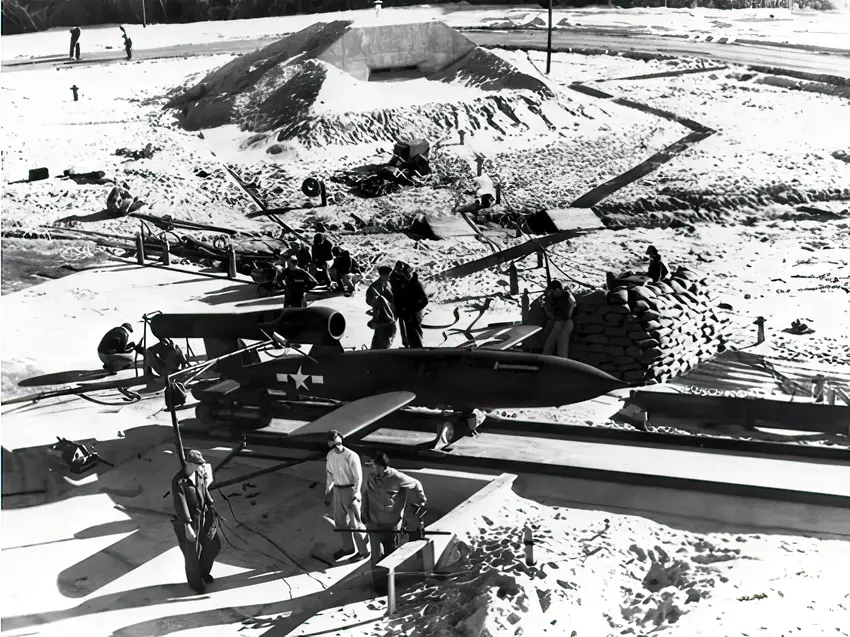

The conversation surrounding the Allies’ replication of German technology during World War II often stirs up a mix of irritation and begrudging acknowledgment among historians and technology enthusiasts alike. It’s a debate that, while grounded in historical events, is frequently overshadowed by exaggeration and oversimplification, thus undermining the vast and innovative technological advancements made independently by the Allies. The narrative that the Allies merely ‘copied’ German technology not only simplifies the complex nature of wartime innovation but also diminishes the ingenious and often superior technological developments made in response to the global conflict.
However, amidst this often contentious debate, it is essential to recognize that technology transfer and adaptation were indeed components of the wartime strategy and a testament to the pragmatic and urgent approach of the Allies. The Republic-Ford JB-2 is a prime example where the Allies, specifically the United States, did take direct inspiration from German technology—in this case, the notorious V-1 flying bomb.

The Foundation of Replication
When it came to replicating the German V-1 flying bomb, the process was far from a straightforward act of imitation. The endeavor to create the Republic-Ford JB-2, or Thunderbug, involved a meticulous and multi-faceted approach, combining intelligence gathering, reverse engineering, and innovative problem-solving. This section dives into the detailed research and development efforts that went into the JB-2, highlighting the complexity and ingenuity involved in adapting the V-1 into an American weapon.
The journey began with the discovery of a crashed V-1 prototype by a Danish naval officer, sparking an intensive intelligence operation. Intelligence agencies in the United States and the United Kingdom collaborated to intercept, decode, and analyze German communications and technical data. This included studying photographs, sketches, and any recovered debris from V-1 test launches. Allied agents inside Germany, along with aerial reconnaissance missions, provided crucial information about the V-1’s design, production, and operational capabilities.

Armed with intelligence, American engineers embarked on a rigorous reverse engineering process. This meant dissecting every piece of available data and material from the V-1 to understand its design and functionality. The first major breakthrough came when engineers at Wright Field successfully fired a working copy of the German Argus As 014 pulse-jet engine, which was meticulously reconstructed from the salvaged parts and intelligence reports. This reverse-engineering effort extended beyond the engine to include the missile’s aerodynamic design, guidance system, and launch mechanism.

Beyond Simple Copying
While the JB-2 was based on the V-1, the American engineers did not stop at mere replication. They sought to understand the underlying principles and then adapt and improve upon them. This involved extensive aerodynamic testing, material analysis, and modifications to the original design to suit American manufacturing capabilities and tactical needs. The engineers made slight alterations in dimensions and structural components, leading to improvements in range, reliability, and operational efficiency. For instance, the JB-2 featured a different pulsejet support pylon shape, reflecting an evolution from the original V-1 design.
A Step Forward
One of the significant departures from the V-1 was the implementation of a more advanced guidance system. While the V-1 was notoriously inaccurate, relying on a simple gyroscopic autopilot and preset controls, the JB-2 incorporated a command guidance system. This system utilized a radar beacon in the missile and radio command guidance from a tracking radar, allowing for mid-course corrections and increased accuracy.

Testing Triumphs
As the first assembled JB-2s rolled out of Republic Aviation, testing began in earnest. The JB-2 differentiated itself with slight alterations in wing span and length, and notably, the shape of the forward pulsejet support pylon. Its early launches from Santa Rosa Island marked a significant step in powered cruise missile technology. These tests were not without their challenges, leading to innovations in launching techniques and command guidance systems, but the JB-2 quickly proved its worth as a formidable weapon.
Though the JB-2 never saw combat, its impact reverberated beyond the war. As the conflict wound down, the focus shifted from immediate deployment to future applications. The JB-2’s design and technology informed the development of advanced surface-to-surface tactical missile systems like the MGM-1 Matador and MGM-13 Mace. Its legacy was a testament to the rapid technological advancements of wartime and a precursor to the missile age.

Guided Missiles and Beyond
The JB-2’s postwar testing at Eglin and beyond was not a quiet retirement but a period of extensive experimentation and refinement. The missile’s design continued to evolve, with new guidance methods and launch techniques. Its influence was felt in various military sectors, from the Navy’s adoption of the KGW-1 to the Air Force’s experiments with pilotless bombers. The JB-2’s story is one of a weapon born from the urgency of war yet paving the way for a new era of guided missile technology.
The Republic-Ford JB-2 exemplifies the blend of ingenuity, espionage, and technological advancement that characterized wartime research and development. Its journey from a secret project to a postwar testbed reflects the relentless pursuit of innovation that defines military history.
